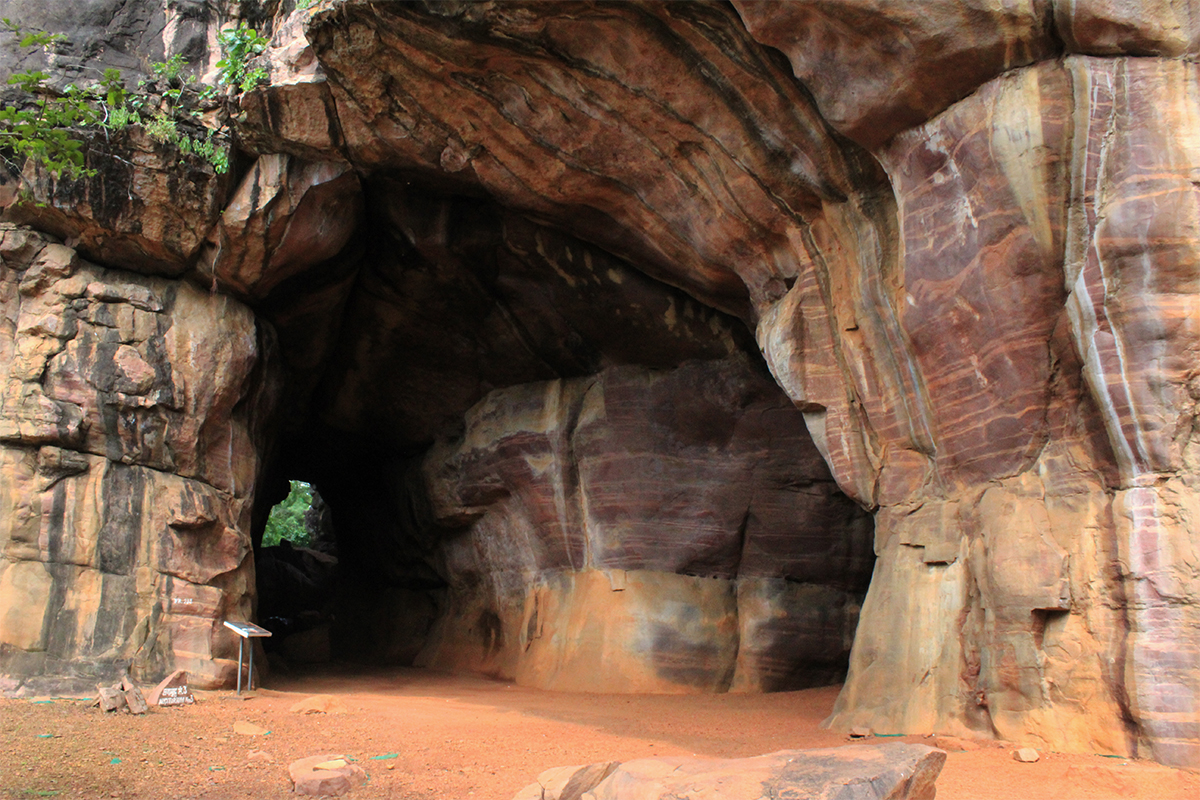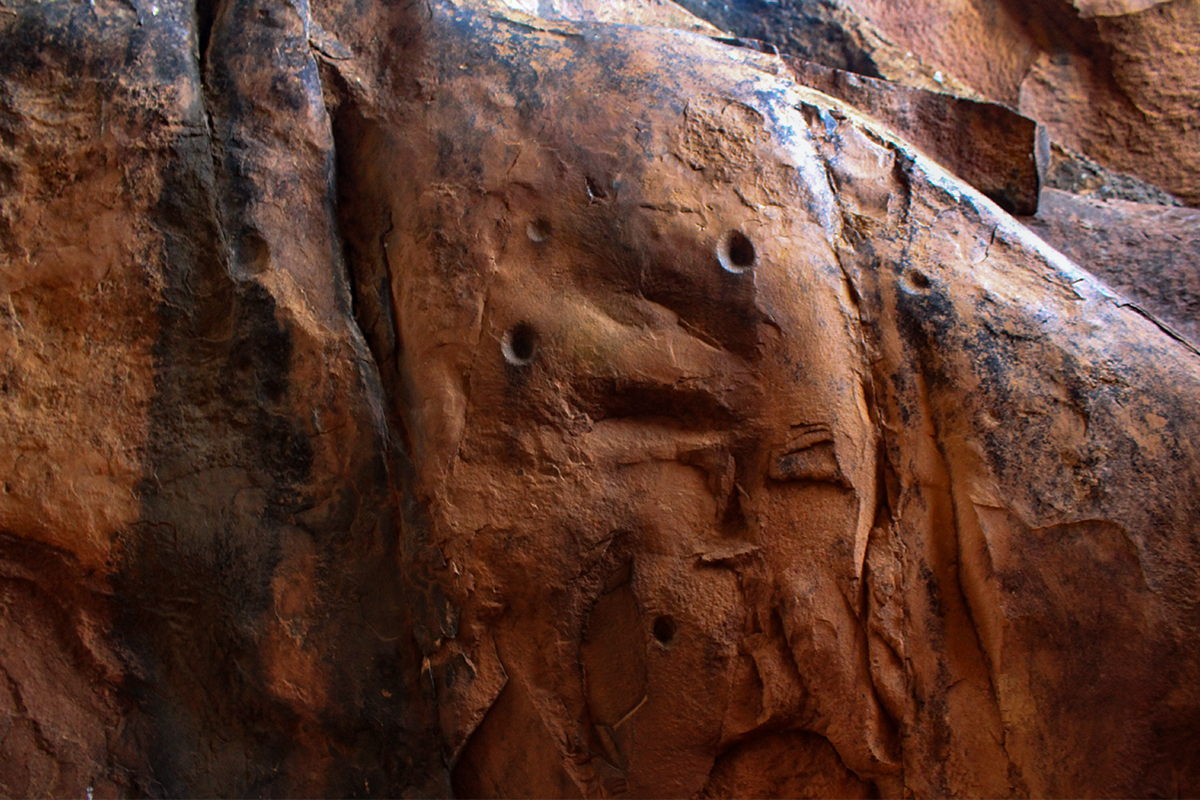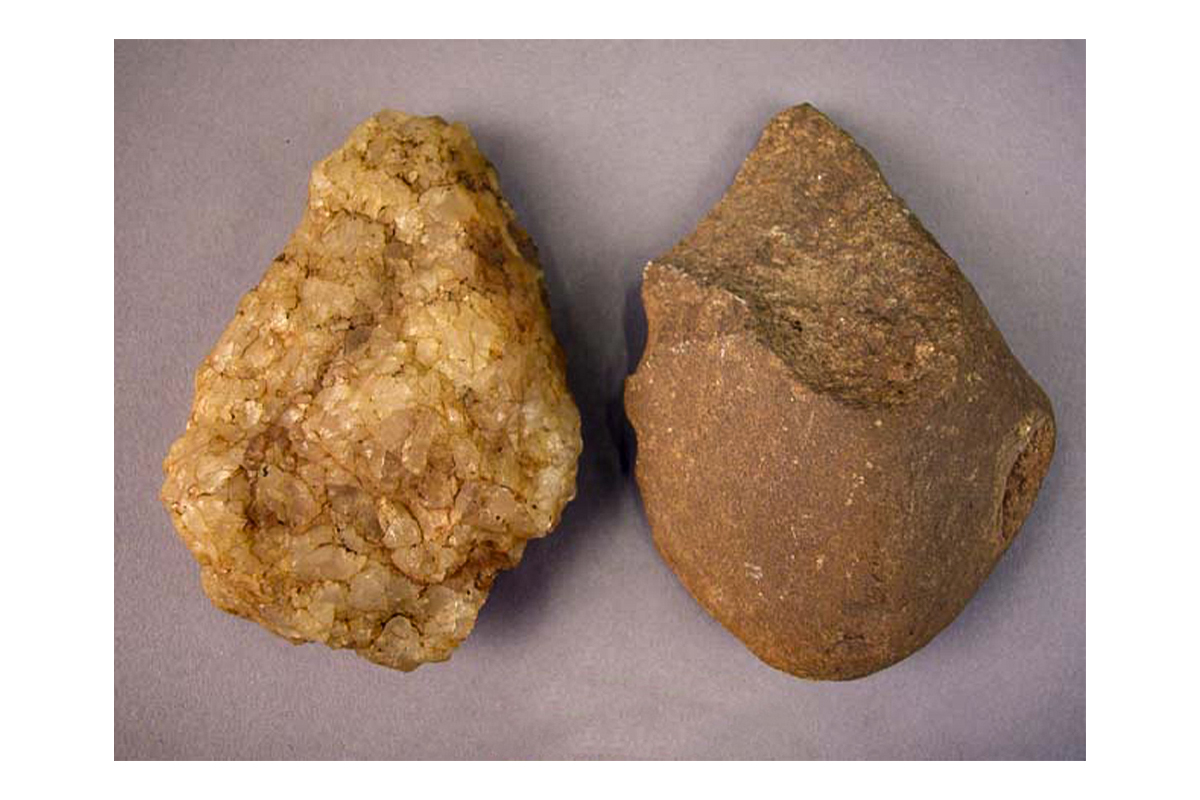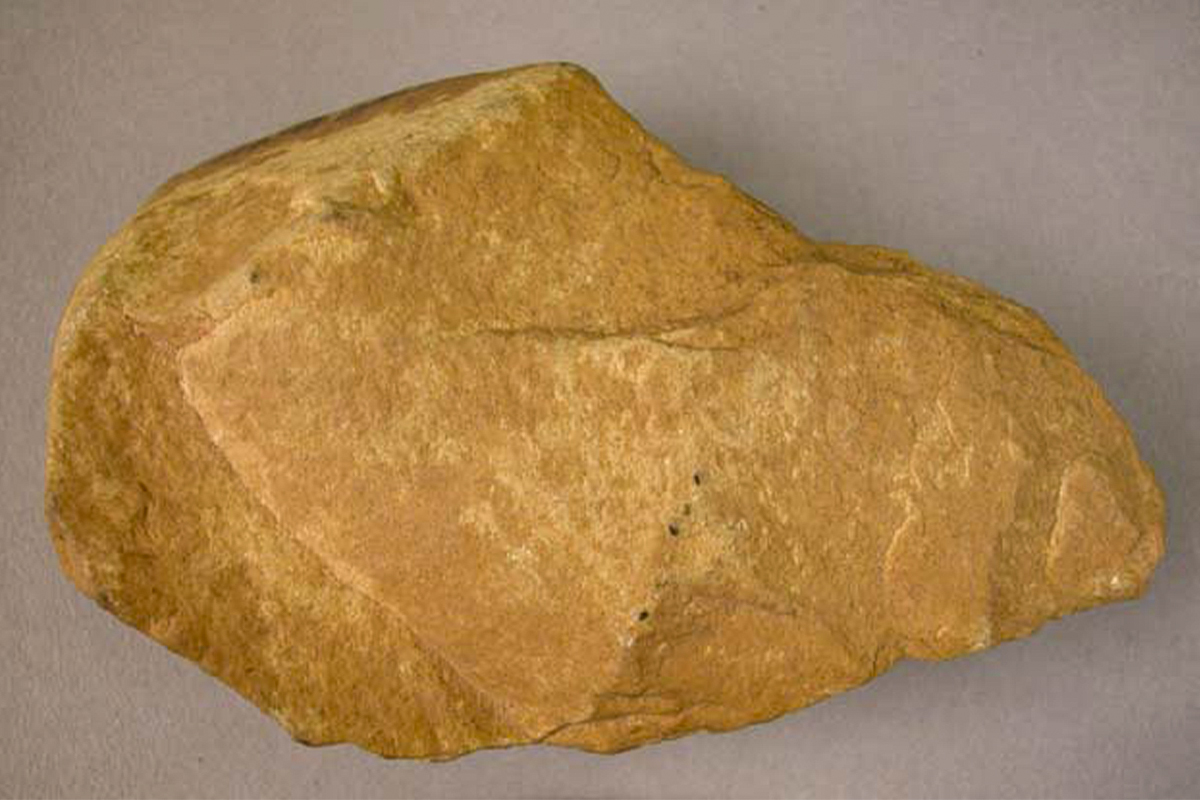Paleolithic Cultures Flourish in South Asia
2000000–10000 BCE
Rituals involving mark-making and figurative imagery, as well as the making and use of stone tools, are practised in parts of South Asia, from the beginning of the Stone Age. Evidence of these survives in the form of petroglyphs or rock carvings, stone artefacts and the fossilised remains of hominids (humans and their ancestors), in present-day India, Pakistan, Bangladesh, Afghanistan and Sri Lanka.
Today, hominid remains between 500,000 and 200,000 years old have been found in the Narmada River valley in central India, including a skull cap fragment from the early part of that period, believed to be of either Homo erectus or an archaic form of Homo sapiens. The fossilised skull of a human infant, dated c. 164,050 BCE, has been discovered in a deposit in Tamil Nadu in southern India. These form the earliest dated hominid remains in South Asia, which also include those found in Darra-i Kur in north-eastern Afghanistan, and in the Fa Hien, Batadomba, Beli and Alu caves in Sri Lanka, broadly dated between 35000 BCE and 8550 BCE.
Stone tools from various stages of the Paleolithic Period — c. 2 million years ago to c. 10,000 years ago — as well as the Mesolithic and Neolithic Periods that followed, have been discovered across the Indian subcontinent — from the Siwaliks range in the north to Sri Lanka in the south, and from Sindh and Afghanistan in the northwest to the easternmost districts of present-day Bangladesh. Some sites have revealed tools from different time-spans within the Paleolithic Period, suggesting multiple levels of occupation. These include the Potwar plateau in present-day Pakistan, as well as Didwana in Rajasthan, Patne in Maharashtra, Atirampakkam in Tamil Nadu, Bhimbetka in Madhya Pradesh and the Belan Valley in Uttar Pradesh, in India. Paleolithic factory sites — places where a large number of tools were made — have been found at Hunsgi, Karnataka and near Nevasa, Maharashtra. Stone Age tools made of bone and fossilised wood have been found at the Kurnool Caves in Andhra Pradesh and the eastern districts of Bangladesh, respectively.
Rock art from the period has been found in central India, speculated to have been made in ritual contexts. This includes petroglyphs in the form of cupules, or small cup-like indentations, at the Auditorium Cave in Bhimbetka, which are broadly dated to between 2 million and 40,000 years ago. Patne in Maharashtra has yielded evidence of an engraved ostrich egg shell. In Baghor, Madhya Pradesh, a triangular piece of stone with naturally occurring bands of laminations was discovered in the middle of a rubble platform, dated c. 9000 – 8000 BCE and attributed to Upper Paleolithic hunter-gatherers. The similarity of the Baghor stone with contemporary cult objects — worshipped as manifestations of Shakti, the divine feminine energy in Hinduism — and its presence in the middle of an artificially constructed platform suggest a possible ritual context.
Bibliography
Chakrabarti, Dilip K. India: An Archaeological History. New Delhi: Oxford University Press, 1999.
Jahan, Shahnaj Husne. “Prehistoric Archaeology in Bangladesh: An Overview.” In A Companion to South Asia in the Past. Edited by Gwen Robbins Schug, Subhash R. Walimbe, 399–411. Sussex: John Wiley and Sons, Inc, 2016.
Kenoyer, J.M., J. D. Clark, J. N. Pal, and G. R. Sharma. “An upper paleolithic shrine in India?” Antiquity 57, no. 220 (July 1983): 88 – 94. https://doi.org/10.1017/S0003598X00055253
Ramaswamy, Vijaya. Historical Dictionary of the Tamils. Maryland: Rowman and Littlefield, 2017.
Singh, Upinder. A History of Ancient and Early Medieval India: From the Stone Age to the 12th century. Noida: Pearson, 2016.
Feedback 
This entry appears in
Art in South Asia
Visit Timeline
First Published: August 5, 2024
Last Updated: August 9, 2024








